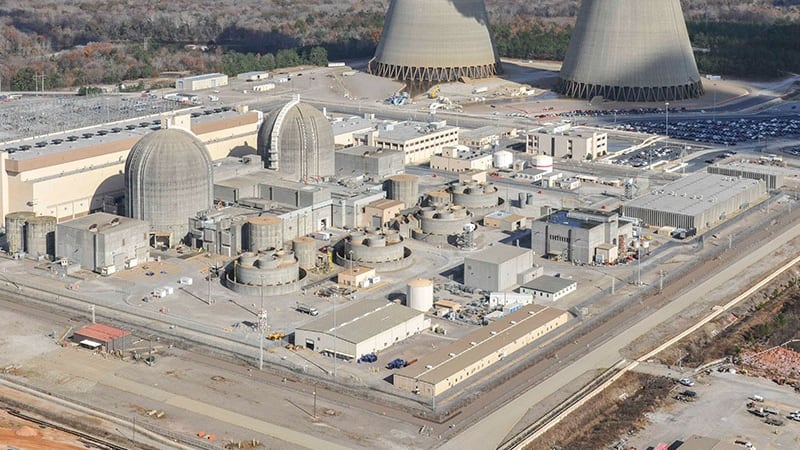Reactor Power Uprate: Your Guide To NRC Approval

Table of Contents
Understanding the NRC Approval Process for Reactor Power Uprates
The process of obtaining NRC approval for a reactor power uprate is multifaceted and rigorous. It demands a strategic approach and a thorough understanding of the regulatory landscape. Let's break down the key stages:
Initial Assessment and Feasibility Study
Before embarking on a power uprate project, a thorough evaluation is paramount. This initial phase focuses on determining the feasibility and potential benefits of the uprate. Key aspects include:
- Preliminary safety analysis report (PSAR) review: A preliminary review of the existing PSAR to identify potential safety concerns related to increased power output.
- Detailed assessment of existing plant systems and components: A comprehensive review of all plant systems to identify any limitations or weaknesses that could impede the reactor power uprate. This includes evaluating the structural integrity of reactor components, piping systems, and safety-related equipment.
- Identification of potential upgrades and modifications required: Pinpointing necessary upgrades to existing equipment and infrastructure to accommodate the increased power output. This might include new pumps, valves, instrumentation, or control systems.
- Preliminary cost estimation and budget planning: Developing a preliminary budget encompassing all anticipated costs associated with the power uprate, including engineering, procurement, construction, and licensing fees. This forms the basis for securing funding for the project.
Developing a Comprehensive Application to the NRC
A meticulously prepared application package is crucial for securing NRC approval. This package must demonstrate compliance with all applicable regulations and provide comprehensive safety analyses. Key components include:
- Detailed description of the proposed power uprate and its impact on plant operations: A clear articulation of the planned increase in power output, along with a thorough assessment of its effects on plant systems, operations, and safety.
- Comprehensive safety analysis report (SAR) addressing all safety-related aspects: A detailed SAR is the cornerstone of the application, providing in-depth analysis of the safety implications of the reactor power uprate. This involves evaluating potential hazards and demonstrating that the plant can safely operate at the higher power level.
- Detailed engineering evaluations and justifications for proposed modifications: Detailed engineering evaluations that justify any proposed modifications or upgrades to plant systems and equipment. These evaluations should demonstrate that the modifications meet all applicable codes, standards, and regulatory requirements.
- Compliance demonstration with all applicable NRC regulations and guidelines: Clear and concise demonstration of compliance with all relevant NRC regulations, guidelines, and industry best practices. This might involve incorporating updated safety standards or implementing new procedures.
Navigating the NRC Review and Approval Process
The NRC review process can be extensive, involving multiple stages of review and potentially requiring responses to information requests. Maintaining open communication and proactive collaboration is key.
- Preparation for NRC staff reviews and inspections: Thorough preparation for on-site inspections by NRC personnel and effective responses to any questions or concerns raised during these inspections.
- Prompt and effective responses to NRC requests for additional information: Timely and comprehensive responses to any requests from the NRC for clarification or additional information, demonstrating a commitment to transparency and cooperation.
- Effective communication and collaboration with NRC personnel throughout the review process: Maintaining open and productive communication with NRC personnel, fostering a collaborative environment to facilitate a timely and efficient review process.
- Addressing any identified deficiencies and revising the application as needed: Promptly addressing any deficiencies identified by the NRC during the review process and revising the application as needed to ensure compliance with all regulatory requirements.
Key Technical Considerations for a Successful Reactor Power Uprate
Achieving a successful reactor power uprate demands careful consideration of several key technical aspects. These technical challenges require specialized expertise and thorough analysis.
Thermal-Hydraulic Analysis
This is a critical component of the power uprate process, ensuring the plant's systems can safely handle increased power without compromising safety margins.
- Detailed thermal-hydraulic modeling and simulation: Advanced modeling techniques to simulate plant behavior at higher power levels, ensuring accurate prediction of thermal and hydraulic conditions.
- Assessment of potential thermal limits and safety margins: Identifying potential thermal limits and ensuring sufficient safety margins are maintained to prevent exceeding these limits under various operating conditions.
- Verification of adequate cooling capacity and safety system performance: Verifying the adequacy of cooling capacity and the performance of safety systems to effectively mitigate potential thermal events.
Safety System Upgrades and Modifications
Upgrading safety systems is often necessary to maintain adequate protection at higher power levels.
- Review and upgrade of safety-related systems and components: A review of all safety-related systems to identify any deficiencies and implement necessary upgrades to maintain a high level of safety at the increased power level.
- Implementation of enhanced safety features and redundancies: Incorporating enhanced safety features and redundancies to improve the overall safety and reliability of the plant.
- Verification of safety system performance through testing and analysis: Rigorous testing and analysis to verify the performance and reliability of upgraded safety systems.
Instrumentation and Control System Enhancements
Accurate and reliable instrumentation and control are vital for safe operation at higher power levels.
- Assessment of existing instrumentation and control systems: A comprehensive assessment to determine the adequacy of existing systems to operate at the higher power level.
- Upgrades to instrumentation and control systems to meet new requirements: Upgrading instrumentation and control systems to ensure accurate measurements and control at the increased power output.
- Verification of system accuracy, reliability, and redundancy: Verifying the accuracy, reliability, and redundancy of upgraded instrumentation and control systems.
Conclusion
Successfully achieving a reactor power uprate hinges on careful planning, a thorough understanding of NRC regulations, and a robust application process. This guide highlights the key steps involved in obtaining NRC approval for a reactor power uprate. By meticulously addressing the technical considerations and navigating the regulatory landscape effectively, nuclear facilities can safely and efficiently increase their power output, optimizing plant performance and maximizing energy production. To learn more about the intricacies of reactor power uprates and ensure a compliant process, contact our experts today for consultation and assistance in navigating the NRC approval process.

Featured Posts
-
 Are High Stock Market Valuations A Cause For Concern Bof A Says No
May 01, 2025
Are High Stock Market Valuations A Cause For Concern Bof A Says No
May 01, 2025 -
 Protecting Yourself From Fake Steven Bartlett Videos A Comprehensive Guide
May 01, 2025
Protecting Yourself From Fake Steven Bartlett Videos A Comprehensive Guide
May 01, 2025 -
 Understanding The Dragons Den Investment Process
May 01, 2025
Understanding The Dragons Den Investment Process
May 01, 2025 -
 Buy Xrp Ripple Now A Detailed Analysis Of The Sub 3 Price
May 01, 2025
Buy Xrp Ripple Now A Detailed Analysis Of The Sub 3 Price
May 01, 2025 -
 Protecting Your S And P 500 Holdings Strategies For Managing Market Volatility
May 01, 2025
Protecting Your S And P 500 Holdings Strategies For Managing Market Volatility
May 01, 2025
